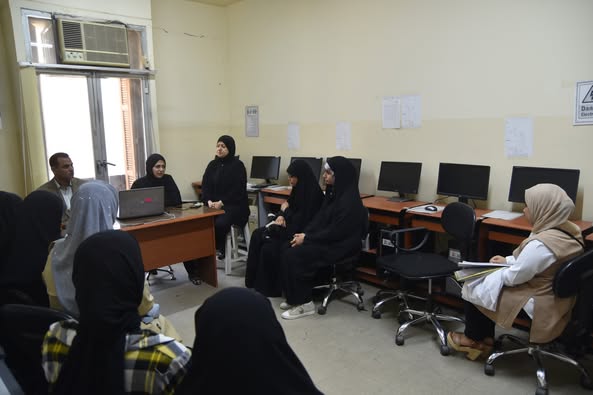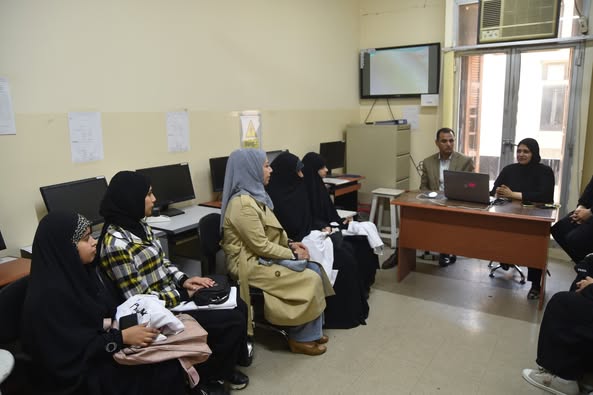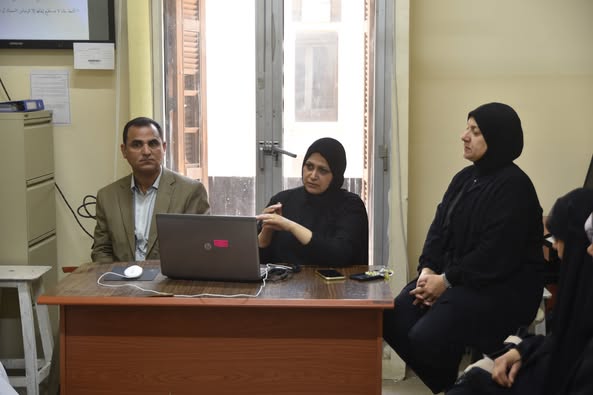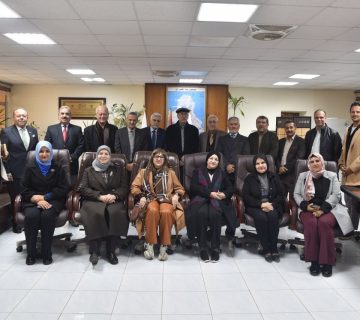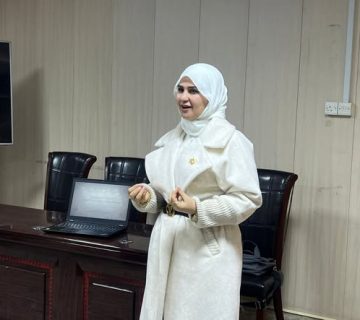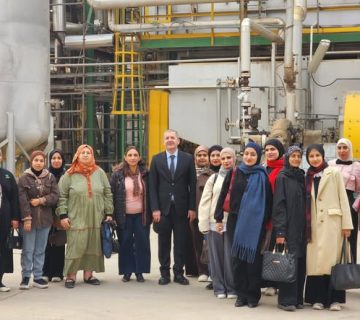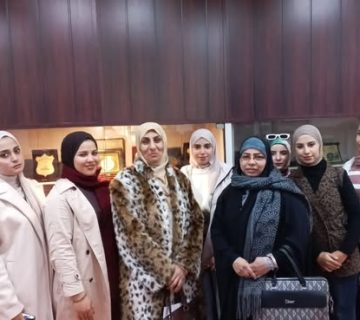Under the patronage of Dr. Sameera Naji Khdim, Dean of the College of Science for Women, the Continuing Education Unit, in collaboration with the Department of Physics, held a training course titled “Radiation Pollution and Its Hazards.” The course was presented by Ms. Huda Abdul-Jabbar Hussein, Ms. Shaimaa Ibrahim Mahmoud, and Mr. Mohammed Iyad Haza. The course was attended by several faculty members and students from the department.
The course began by introducing the term “radiation” and explaining its origins. It was noted that with the onset of human utilization of nuclear energy more than fifty years ago, humanity faced significant challenges, during which the concepts of radiation, radiation protection, and nuclear hazards were introduced.
During the course, the types of radiation were explained, including alpha particles, which cannot penetrate the skin, beta particles, which can pass through human tissue to a depth of one to two centimeters, and gamma rays, which can only be stopped by using thick lead shielding or a dense layer of water.
Radiation pollution factors depend on various elements, including the type of radioactive source, the level of nuclear radiation exposure, its intensity, the duration of exposure, and the specific parts of the human body exposed to the radiation.
As for high-energy radiation sources, these include annual dosage, natural sources, human-made sources, cosmic radiation, building materials, and the repercussions of atomic bombs.
The course also covered the necessary procedures to follow and preventive recommendations against radiation, including the use of protective shields, minimizing the duration of exposure to radiation whenever possible, increasing the distance between the individual and the radioactive source, continuous monitoring of environmental radiation levels, and conducting regular health checks for workers in this field.
